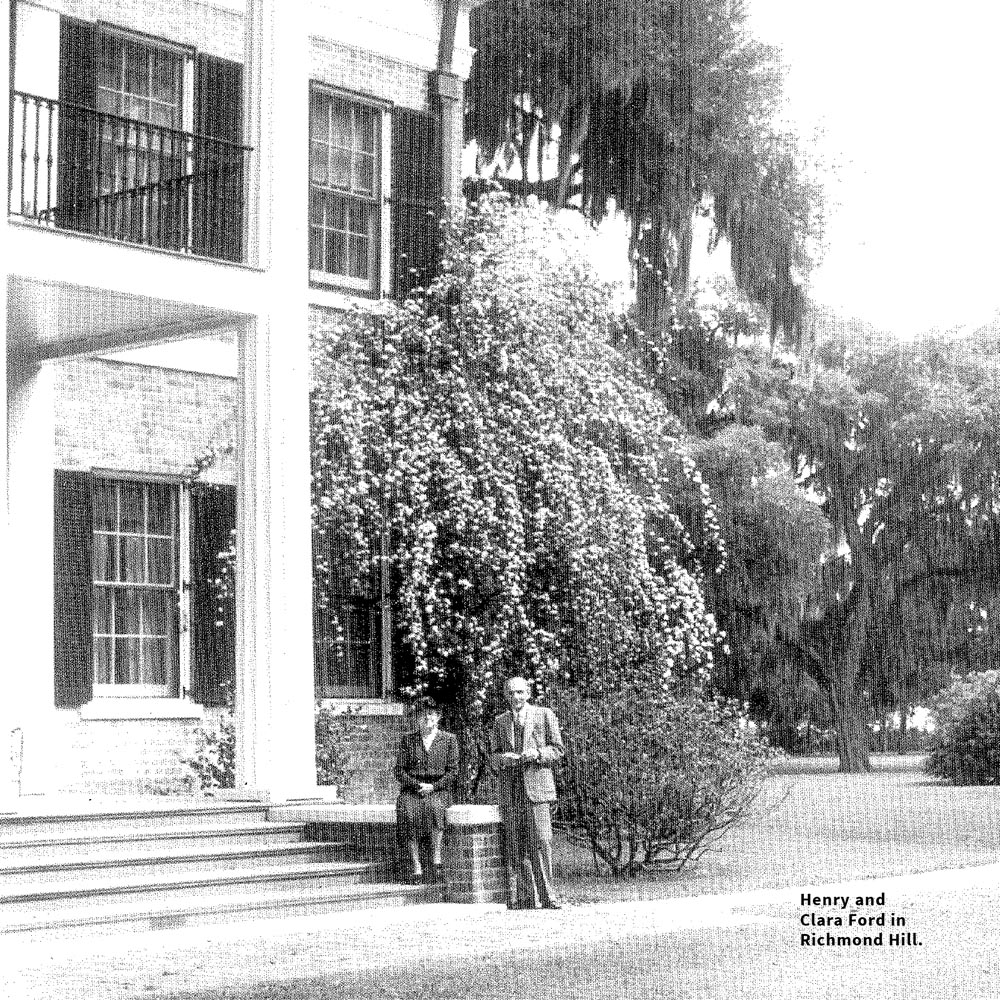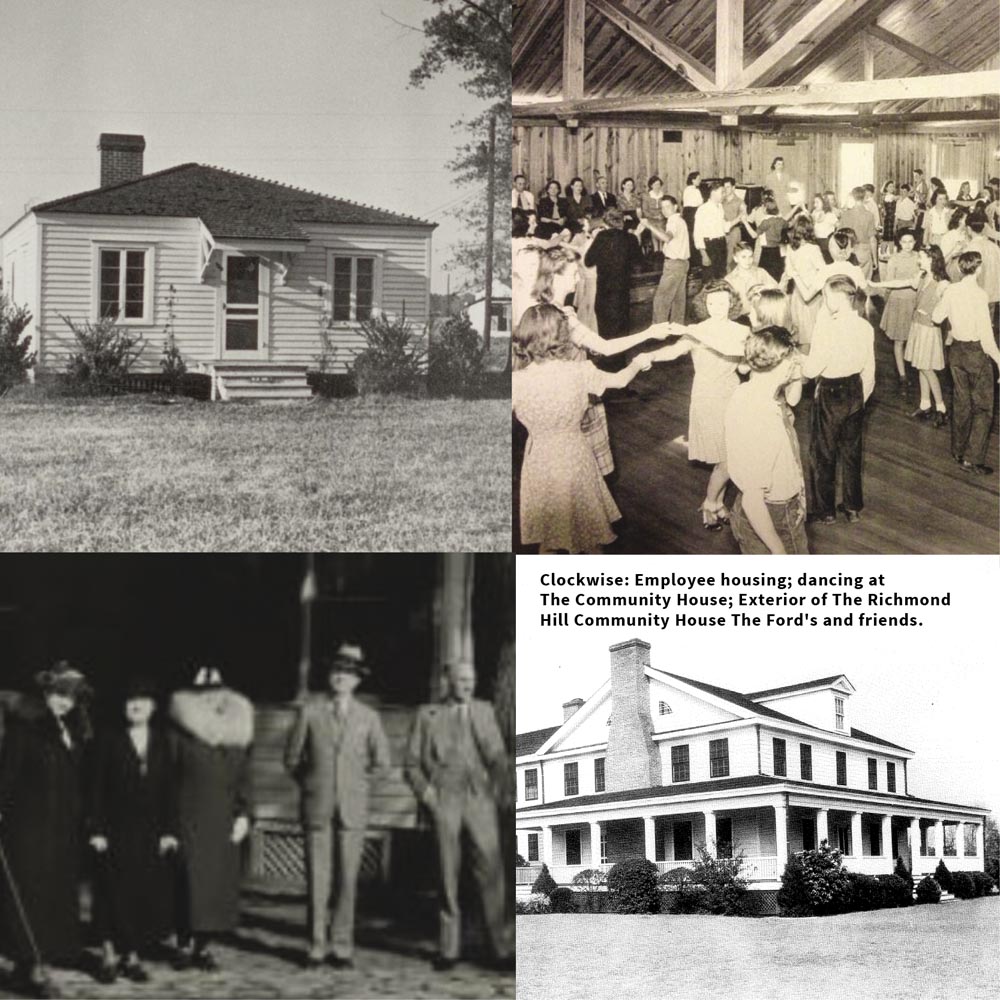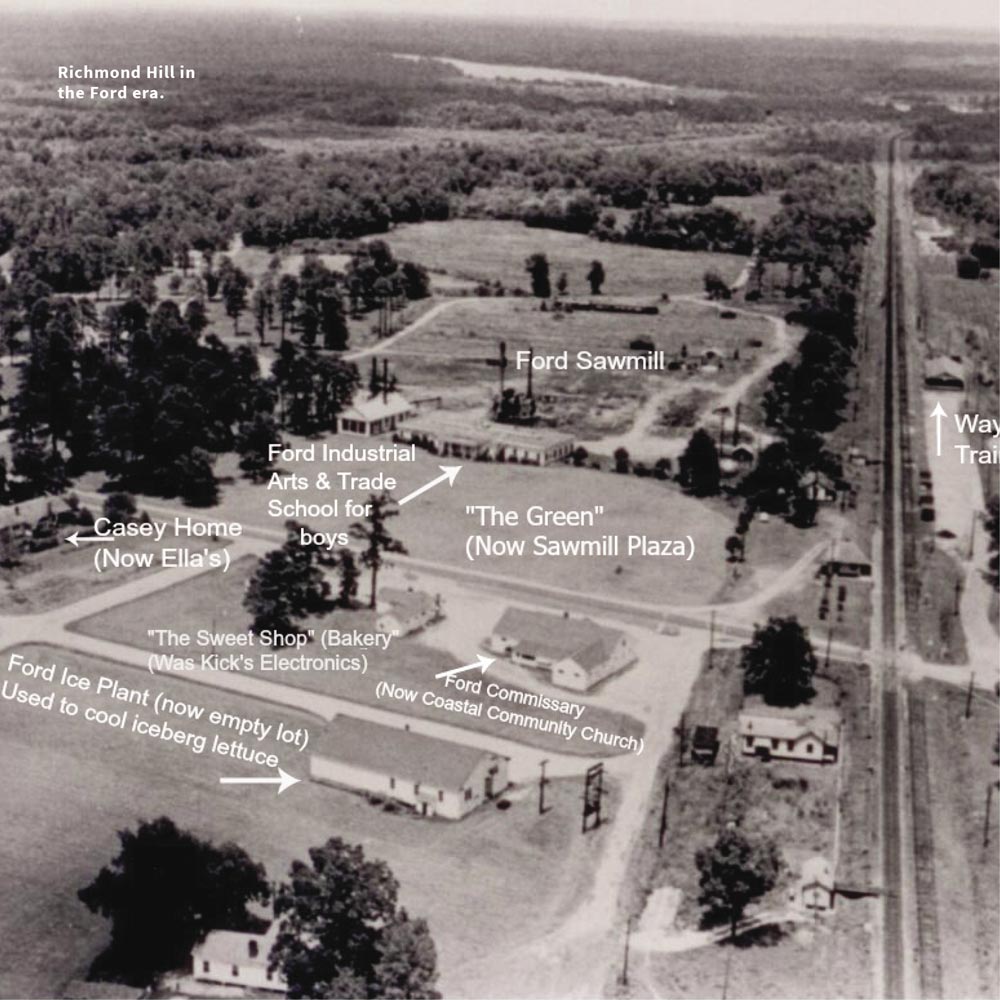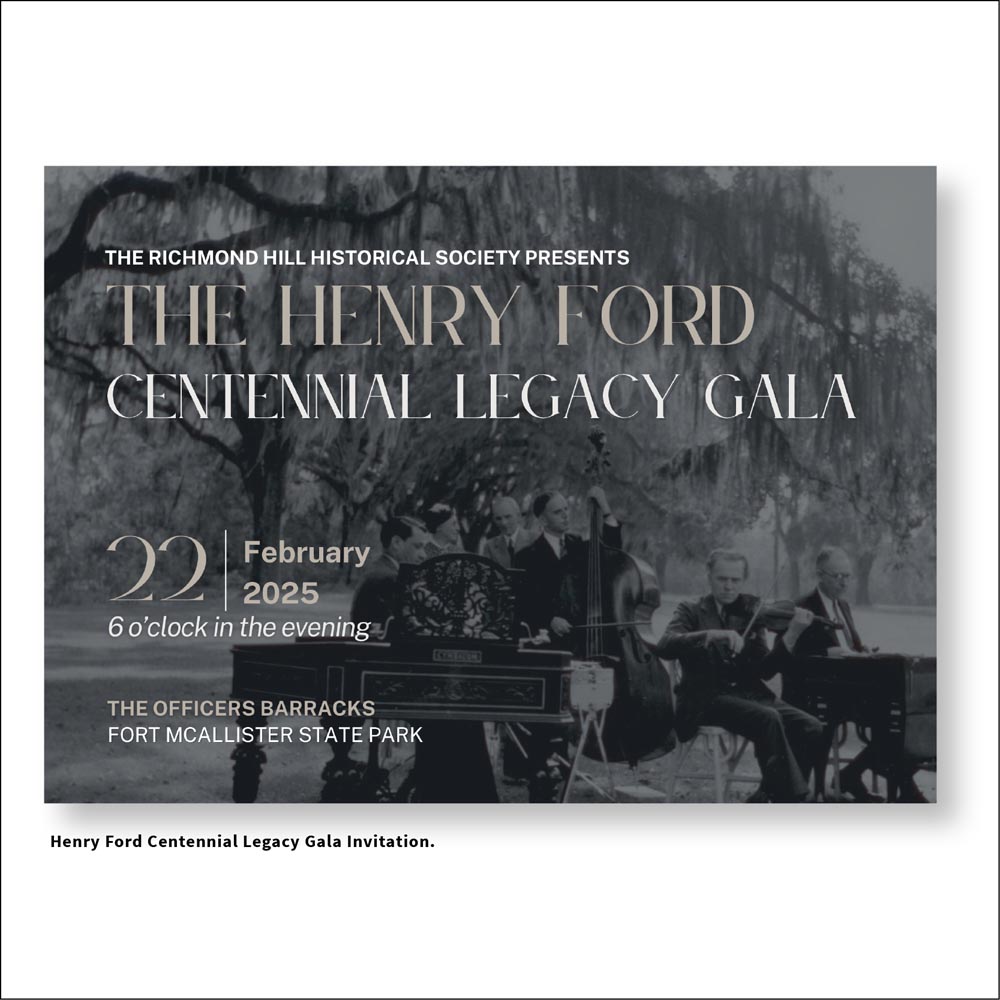
Henry Ford’s Legacy in Richmond Hill
A Centennial Celebration
Words By Lauren Seaman Photos provided By Richmond Hill Historical Society

Henry Ford, a name synonymous with industrial innovation and mass production, left a lasting legacy that extends far beyond the automobile industry. While his contributions to global manufacturing transformed economies all over the world, his impact on one local economy in Georgia showcases a different side of Ford—a philanthropist dedicated to improving the lives and prosperity of his friends, neighbors and fellow community members. Through his innovative mind and unmatched vision, Henry Ford completely redefined the physical and sociocultural landscape of Richmond Hill. Evidence of Ford’s philanthropic activities in Richmond Hill remain visible today and stand proud as reminders of his formidable imprint not only on Richmond Hill’s industry and commerce but also on the well-being of its people.

In December 1925, at Ford’s request, his private secretary Frank Campsall placed an inquiry with Savannah-based realtor R. L. Cooper about the availability of land and property for sale in the area. Guided by Cooper’s suggestion, Henry and Clara visited Bryan County and toured portions of three former rice plantations, Cherry Hill, Strathy Hall, and Richmond on the Ogeechee. Henry found the area rich with natural beauty, wildlife and opportunity, while Clara quickly became captivated by the Spanish moss-covered live oaks, abundant avian wildlife and the town’s quaint charm. Before leaving Savannah, Ford instructed Campsall to begin negotiations on a purchase agreement. Less than three months later, in March 1925, Henry Ford purchased his first 100 acres of land in Richmond Hill, formerly known as Ways Station.
Over the next few years, Ford purchased more than 85,000 acres of land, which included rice plantations and overgrown fields, and began to shape the area according to his vision of an ideal rural community. While Richmond Hill served as a quiet escape from the hustle and bustle of Detroit, Ford was not content to simply enjoy his retreat—he sought to transform the town and the lives of its residents.

One of Ford’s guiding principles, throughout his life, was the belief that industry and agriculture should work hand-in-hand, and through this partnership, societies and communities could become more self-sufficient and prosperous. Ford began investing heavily in the area, not only for personal comfort but also to drive the union between industry and the local landscape. Ford established a farm, timber operations and a sawmill in Ways Station, which not only bolstered the agricultural industry but also provided hundreds of jobs for the region’s impoverished residents. However, many residents from the rural and undeveloped areas found it difficult to commute to work.
As his industrial operations continued to expand, Ford decided to construct tenant housing for Ford Plantation employees and their families. Ford employed his sawmill to begin the manufacturing of housing supplies according to a handful of specific design guidelines that allowed the homes to be easily and efficiently assembled on-site in a short period. Over the next few years, they constructed 207 tenant houses at an average cost of about $3,500 each. Ford adjusted rental rates for each family, depending on their needs. Some of the poorest families were only charged a token rate of $1 per month for rent.

With the influx of so many families and children, Ford quickly set to work on establishing societal infrastructure to serve them. He constructed an ice house, community house, kindergarten building, commissary, churches, medical clinic, carpentry shop, bakery, post office, and Industrial Arts & Trades School, to name just a few. This state-of-the-art facility offered education for local children and incorporated his ideals of practical, hands-on learning in combination with theoretical knowledge. The school provided modern classrooms, science labs, and an auditorium—luxuries unheard of in the area at the time. For each of these establishments, Ford sourced well-qualified staff to serve, treat, and educate the community. Once the infrastructure stood, Henry and Clara added layers of cultural enrichment like music programs, and encouraged and funded artistic pursuits. These activities helped foster a sense of pride and community among residents.
Determined not to be viewed as distant benefactors, Henry and Clara were deeply involved in many of their efforts, personally overseeing the projects designed to improve the town. Ford was often seen walking the streets of Richmond Hill, talking with residents, and inspecting the progress of his various endeavors. Through all these efforts, Ford hoped to create a model community where people could thrive through hard work, proper education, and access to modern amenities.

By arming his community members with skills, knowledge, and hope, Henry Ford sought to revitalize a sleepy community in rural Georgia with the vision of creating a sustainable community that would prosper long after his influence. Ways Station, which was renamed Richmond Hill in 1941 in Ford’s honor, continues to celebrate his contributions today, 100 years later. His influence on the area’s architecture, infrastructure, and economy is a reminder of his dedication to the prosperity and well-being of his community’s well-being far beyond financial gain and economics. Though he passed away in 1947, the foundation he laid in Richmond Hill shaped the town’s identity and set the community on a path of progress and ingenuity.
Next year marks the 100th Anniversary of Ford finding Richmond Hill. The Richmond Hill
Historical Society will host The Ford Legacy Centennial Gala on February 22, 2025, and you are invited! Join us as we honor and celebrate the profound contributions upon which our wonderful city was built.















